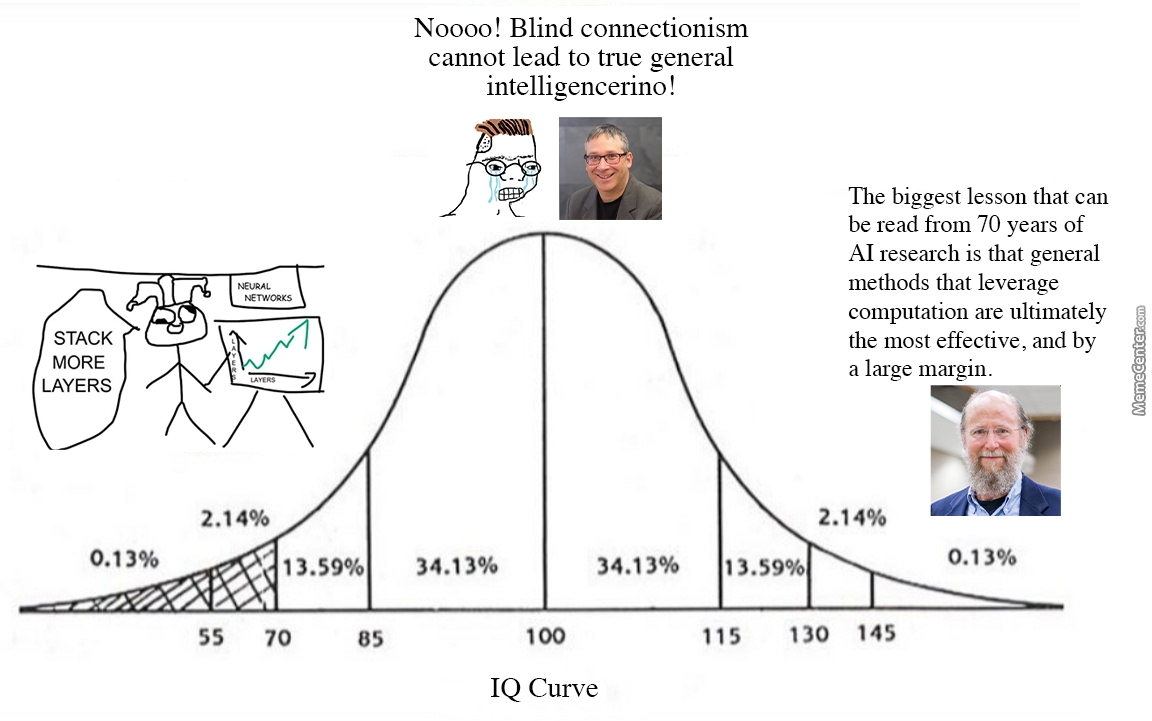\(\Im\in\int\int\)
deep learning worked
This document covers the foundations of neural networks by training one in a fullstack fashion from math to metal. We will build a deep learning framework from scratch starting with the tensor frontend, autodiff engine, supporting both CUDA and Triton.
Why neural networks? bitter lesson. compositionality. representation learning.
danger in proving theorems. it's a way to showcase your skill but it's not necessarily aligned with what makes progress in the field. Moreover, because of academia's incentive structure with respect to static datasets and benchmarks, there was no motivation to explore what kind of results could be obtained by feeding larger datasets such as the internet to models.universal behavioral cloner (universal function approximation)
representation
optimization
In deep learning most learning methods are gradient-based, since the core problem is one of parameter estimation, solved by \[ \boldsymbol{\theta}^* = \underset{\boldsymbol{\theta} \in \Theta}{\operatorname{argmin}} \mathcal{L}(\boldsymbol{\theta}) \] where \(\mathcal{L}: \Theta \mapsto \mathbb{R} \), and \(\operatorname{argmin}\) is implemented iteratively with gradient descent: \[ \boldsymbol{\theta}_{i+1} = \boldsymbol{\theta}_i - \alpha \nabla_{\boldsymbol{\theta}} \mathcal{L}(\boldsymbol{\theta}_i) \]
Now that we have formalized the "goodness" of our neural network's parameter (weights and biases) estimation with the loss function \(\mathcal{L}: \Theta \mapsto \mathbb{R} \) defined as ____, we will now perform parameter estimation with the following optimization problem: \[ \boldsymbol{\theta}^* = \underset{\boldsymbol{\theta} \in \Theta}{\operatorname{argmin}} \mathcal{L}(\boldsymbol{\theta}) \] where \(\operatorname*{argmin}\) is implemented with automatic differentiation. To motivate the algorithmic nature of automatic differentiation, let's take a look at symbolic and numeric differentiation first.
This optimization problem is typically solved using iterative methods, most commonly variants of gradient descent. The basic idea is to update the parameters in the direction of steepest descent:
\[\theta_{t+1} = \theta_t - \alpha \nabla f(\theta_t)\]
where \(\alpha\) is the learning rate and \(\nabla f(\theta_t)\) is the gradient of \(f\) at \(\theta_t\).
The challenge in neural network optimization lies in the high-dimensionality of the parameter space, the non-convexity of the loss landscape, and the need for efficient computation of gradients, which is addressed by backpropagation and automatic differentiation.
generalization
on generalization... Because we are approximating population loss with sample loss, there are times where we perform well on the computable sample loss yet perform poorly on population loss (approximated further by evaluating our predictor on unseen data from the underlying data generating distribution). This can happen due to a lack of data (underfitting), or due to an excess of model complexity (overfitting). Both of them leads to poor generalization on the population loss.
References